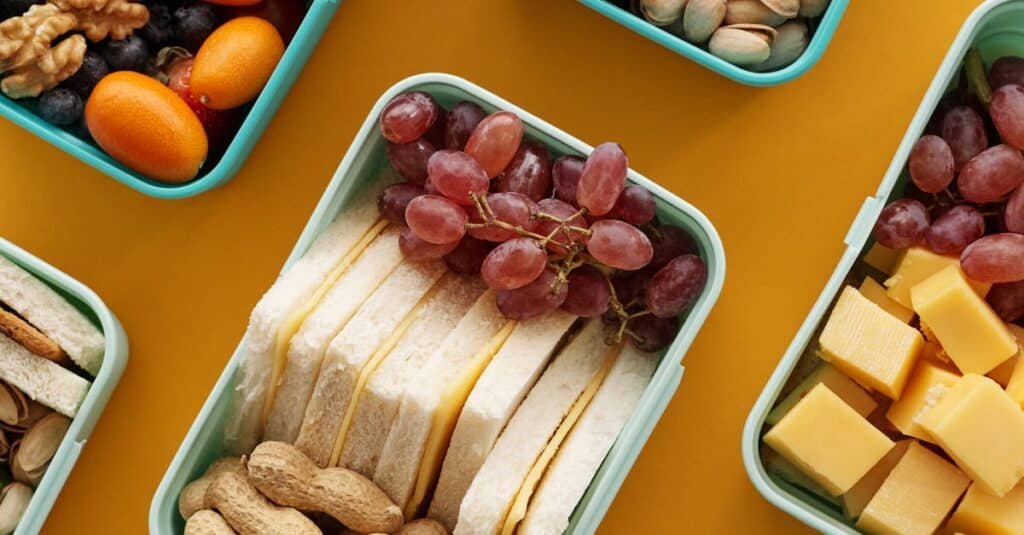Food Portions: The Battle Between Enough and Too Much
Imagine this: you’re sitting at your favorite restaurant, staring at a plate piled high with food. It smells amazing, and your stomach growls in anticipation. But as you dig in, you realize—this is way more than you need. By the time you’re done, you’re uncomfortably full, and guilt starts creeping in. Sound familiar?
Portion control isn’t just about weight loss or dieting. It’s about understanding your body, respecting its needs, and making choices that keep you healthy and energized. But here’s the twist: what you think is a portion might not actually be a serving. And that’s where the drama begins.
The Video on portion control below can be watched on YouTube link here.
Portion vs. Serving: The Ultimate Showdown
Let’s get one thing straight: a portion is what you choose to eat. It’s the mountain of pasta on your plate or the handful of chips you grab from the bag. A serving, on the other hand, is what’s listed on the Nutrition Facts label. It’s the cold, hard truth about how much you should be eating.
Here’s where it gets juicy. That frozen lasagna you love? The label says one serving is 1 cup, but the container holds four servings. If you eat half the package (because, let’s be honest, who stops at one cup?), you’re not just indulging—you’re doubling your calories, fat, and sodium in one sitting.
Do you know how to get rid of a stubborn cold Read our post to get rid of it.
The Plot Thickens: Serving Sizes Have Changed
In a shocking twist, the FDA has updated serving sizes to reflect how we actually eat. Ice cream servings used to be ½ cup—now they’re ⅔ cup. Yogurt servings shrank from 8 ounces to 6 ounces. Why? Because we’ve been eating more, and the labels are finally catching up.
But don’t be fooled. These changes aren’t a free pass to eat more. They’re a wake-up call to pay attention. The serving size on the label isn’t a recommendation—it’s a reality check.

How Much Should You Eat? The Mystery Unraveled
Here’s the million-dollar question: how much is enough? The answer isn’t one-size-fits-all. It depends on your age, weight, height, metabolism, and activity level. A 150-pound woman who walks once a week needs fewer calories than her marathon-running twin.
To crack the code, use tools like the Dietary Guidelines for Americans or the MyPlate Plan. They’ll help you figure out how many calories you need and how to balance your meals. But remember: this isn’t just about numbers. It’s about listening to your body and eating mindfully.
The Nutrition Facts Label: Your Secret Weapon
The Nutrition Facts label is like a detective’s notebook—it holds all the clues you need to make smarter choices. Look for:
- Calories: The big, bold number that tells you how much energy you’re getting.
- Added Sugars: The sneaky culprit hiding in your favorite snacks.
- Sodium: The silent saboteur that can wreak havoc on your health.
- Vitamin D and Potassium: The unsung heroes most of us don’t get enough of.
And here’s a pro tip: use the label alongside the MyPlate Plan to create a balanced meal that’s just right for you. Portion control becomes easier when you develop the habit of reading nutrition labels carefully.
Know more about streptococcus thermophilus probiotic
The Drama of Overeating: A Cautionary Tale
Picture this: you’re bored at work, so you grab a handful of cookies. By dinner, you’re starving and devour a massive plate of high-calorie food. Later, you check your food tracker and realize you’ve eaten nearly 3,000 calories in one day. Ouch.
This isn’t just a story—it’s a reality for many of us. The key is to recognize why you’re eating. Are you hungry, or are you bored, stressed, or distracted? By keeping a food tracker, you can spot patterns and make better choices.
Portion Control at Home: Your Heroic Journey
Managing portions at home doesn’t have to be a battle. Here are some winning strategies:
- Use smaller plates: Trick your brain into thinking you’re eating more.
- Eat slowly: Give your brain time to realize you’re full.
- Freeze leftovers: Save them for another day instead of overeating.
- Snack smart: Choose fruits, nuts, or veggies instead of chips and cookies.
Eating Out: The Final Frontier
Eating out is where portion control often goes off the rails. But you can stay in control:
- Share a meal: Split an entrée with a friend or take half home.
- Skip the buffet: Opt for restaurants with healthier, portion-controlled options.
- Read the menu: Look for calorie counts and choose smaller sizes.
And remember: just because it’s a “value meal” doesn’t mean it’s valuable for your health.
The Grand Finale: Eating Well on a Budget
Eating healthy doesn’t have to break the bank. Buy seasonal produce, stick to serving sizes, and get creative with leftovers. When dining out, order “family style” to share and savor a variety of dishes without overdoing it.
The Takeaway
Portion control isn’t about deprivation—it’s about empowerment. It’s about understanding what your body needs and making choices that fuel you, not overwhelm you. So the next time you’re faced with a mountain of food, ask yourself: Is this enough, or is it too much? The answer might just change your life.
Now, go forth and conquer your portions. Learn portion control. Your health—and your waistline—will thank you.
Use Food Portions Calculator: Click Here.





Pingback: Food Portions Calculator: Find Your Perfect Serving
Pingback: How Ready-Made Meals Saved My Waistline & Sanity